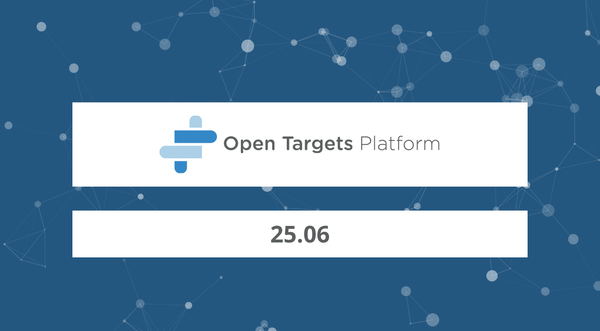Open Targets Platform 23.09 has been released!
The latest release of the Platform — 23.09 — is now available at platform.opentargets.org. It comes with a completely new, dynamic associations view: 'Associations on the Fly'.
Key points
- Explore Associations on the Fly (beta), our refreshed associations page with new facets and functionalities
- Read natural language summaries of a publication's target-disease association evidence
- Data updates: Probes&Drugs, String, and more
Key stats
| Metric | Count |
|---|---|
| Targets | 62,733 |
| Diseases | 25,209 |
| Drugs | 17,096 |
| Evidence | 16,232,046 |
| Associations | 7,922,844 |
Find additional metrics on the Open Targets Community.
Associations on the Fly (beta)
“Associations on the fly” is a revamp of the current Open Targets Platform association page with new facets and additional built-in functionalities.
This is a major step in our ongoing effort both to refresh the look and feel of the Platform and to enhance the Platform’s capabilities to help build therapeutic hypotheses.
The Associations on the Fly view will eventually replace the classic associations view, so please let us know what you think by commenting on this post, or commenting on our post in the Open Targets Community.

Key features
- Dynamically modify the relative importance of the different data sources ‘on the fly’
- View the supporting data directly in the associations table, and quickly compare evidence for different associations
- Filter by datasource and data type (note: these are OR filters)
- Pin rows for easy comparison; share your list of pinned targets
OpenAI Literature Summarisation tool
For data features that link to publications, the Platform now provides the option for users to ask for a natural language summary of the target-disease evidence presented in the publication (when the full-text article is available and free to re-use).
Using LangChain, we first prompt OpenAI's GPT3.5 Turbo model to summarise relevant portions of the text, which we then ask it to summarise with the following prompt: "Can you provide a concise summary about the relationship between [target] and [disease] according to this study?". The resulting text is presented to the user.

We hope this feature will help users better understand the available bibliography and provide contextual evidence in an easy-to-read manner.
Data updates
This release also integrates regular updates from our data providers. Of note, we have increased the scope of our drug index to include chemical probes reported by Probes&Drugs, increasing the number of compounds in our drug index. We have also updated our molecular interactions to include String Database version 12.0.
Additionally, improvements to our pipeline have increased the number of manuscripts with grounded entities; our dataset features over 17 million manuscripts with grounded entities (target, disease, or drug).
Finally, you can now view the schema of the files available for download in the Open Targets Platform in our data downloads page.
Let us know what you think by joining the conversation on the Community!




